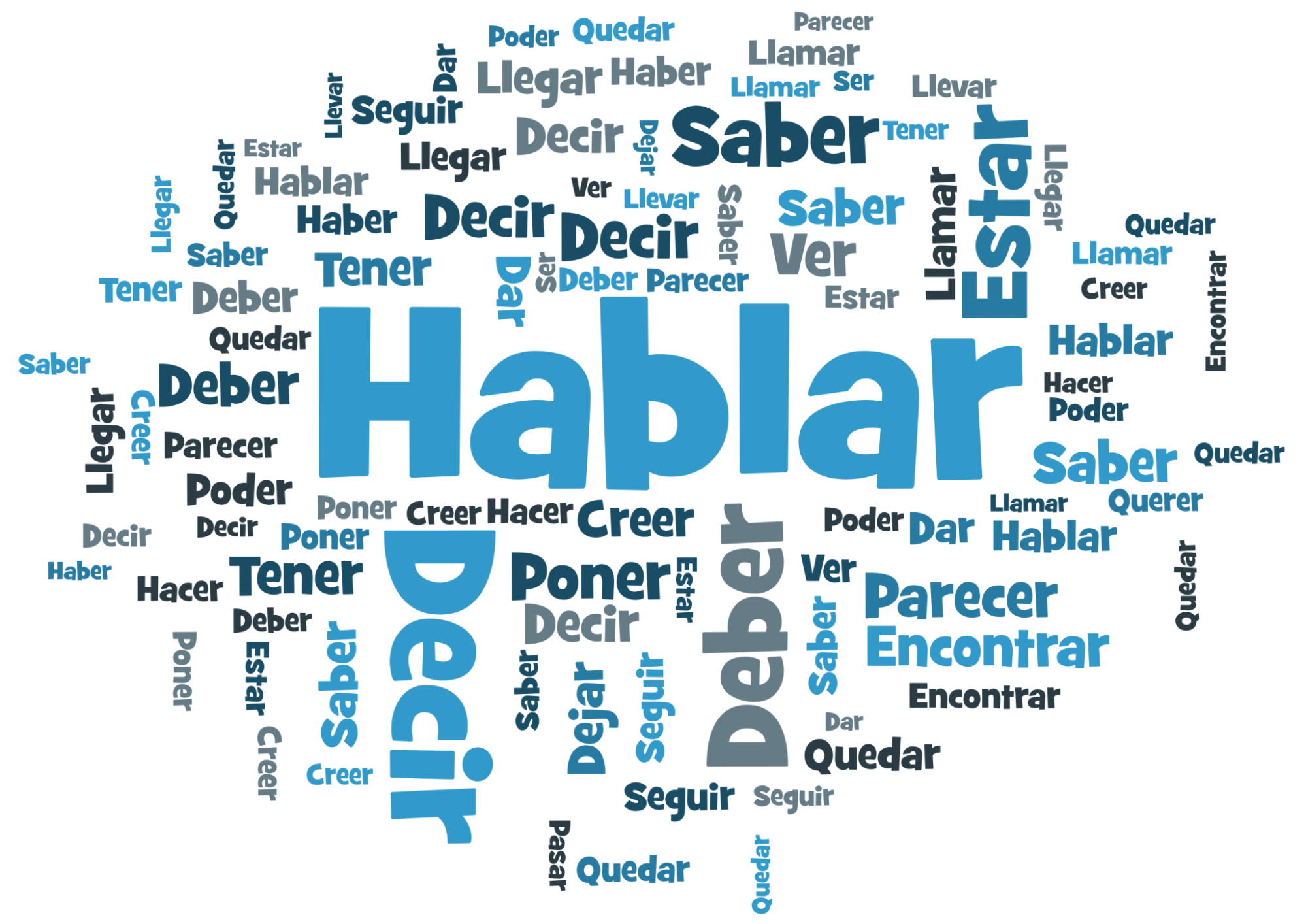When you get hungry enough, you find yourself speaking Spanish pretty well - Josh Gibson
The essentials for learning Spanish start with understanding the grammar techniques and pronunciations. For this, you have to learn the Spanish alphabet and words, the correct accents, and the rules of sentence construction. A Spanish language course can be helpful in teaching you all of these and more. And while there are many good reasons to start learning the language, find your own and start learning with Spanish classes online.

Join Spanish Classes to Perfect Your Accent
Spanish is officially a global language, with as many as 21 countries having declared Spanish as their official language.
Of these, 19 countries are in the Americas alone. So, if you are looking for Spanish language classes, look for courses that also help you understand the diversity and nuances of the language. The Spanish language has more than one dialect and multiple accents, which may seem difficult to master at first. This is why you should learn Spanish only from certified tutors and recognized courses. As part of your Spanish lessons, you will begin to understand the linguistic differences in the language that widely differ across the different countries that have Spanish-speaking people

An example of just how extensive the Spanish language is the presence of so many different dialects in Spain alone. Southern Spain is dominated by the Andalusian dialect, which is further divided into the Eastern and Main dialects, depending on the region.
Other Spanish dialects spoken in Spain are Castillian, Canarian, Extremenian, Llanito, Madrileno, Manchego, and Murcian.
When you sign up for Spanish classes near me, you will begin to understand what a language is and how it differs from an accent and a dialect. A language is simply the official language of a country, used to write and speak. A dialect is a subset of that language that varies in terms of grammar and vocabulary. An accent, on the other hand, is derived from a dialect and is determined by how a particular group of people in a region pronounces different words.
As for the language itself, there are three main language groups in Spanish - Catalan, Basque, and Galician. There are significant differences between the three groups in terms of their origin, usage, and pronunciations.
Best Spanish Speaking Countries To Travel To Learn Spanish
If you are really determined to learn Spanish then traveling to a Spanish-speaking country and immersing yourself in their culture is among the most enjoyable ways to learn the language.
Traveling is a great way to increase your ability to understand the different dialects as well as the way in which Spanish is spoken. Once you understand the language, it is mostly just about practicing with native speakers to hone your skills.
Here is our list of the top 10 countries to get the most immersive Spanish learning experience:
| Spain: As the birthplace of the language, Spain offers a rich and diverse cultural experience. You can choose to study in major cities like Madrid, Barcelona, or Seville, or in smaller towns for a more immersive experience. |
| Mexico: Mexico is one of the most popular destinations for learning Spanish due to its proximity to the United States. Cities like Mexico City, Oaxaca, and Guanajuato offer language schools and a vibrant cultural scene. |
| Colombia: Colombia has gained popularity for its low cost of living and friendly locals. Cities like Bogotá, Medellin, and Cartagena offer Spanish language programs. |
| Argentina: Known for its distinct accent, Argentina is a great place to learn Spanish. Buenos Aires, in particular, is home to numerous language schools and cultural attractions. |
| Costa Rica: Costa Rica offers a natural paradise with diverse landscapes and abundant wildlife. Cities like San José provide language programs, and you can practice your Spanish while exploring the country. |
| Peru: Peru's rich history and cultural diversity make it an enticing destination for Spanish learners. Cusco and Lima are popular cities for language schools. |
| Chile: Chile's stable economy and stunning landscapes are appealing for language learners. Santiago and Valparaiso offer language programs and the chance to explore the country. |
| Ecuador: Ecuador is known for its natural beauty, including the Galapagos Islands. Quito and Cuenca have Spanish language schools and are great places to practice your skills. |
| Dominican Republic: The Dominican Republic offers a Caribbean setting for language learners. Santo Domingo, the capital, provides various language programs. |
| Guatemala: Known for its affordability and indigenous culture, Guatemala offers Spanish immersion programs in places like Antigua and Quetzaltenango. |

Learn Spanish Through TV Shows & Podcasts
Spanish classes near me will help you delve into different aspects of the Spanish language - its history, how it has evolved over time, the latest developments and changes, and of course, the basics of the Spanish language - grammar, sentences, and vocabulary.

A very interesting component of Spanish lessons is to learn how to form sentences, which is quite technical in many ways and follows standard methods. As gradually move from one level to another, the level of sentences that you form also becomes more complex.
There are three basic sentence types in the Spanish language, that you will be taught in your Spanish lessons and courses over time. These are,
- Affirmative Sentence: Sentences that follow the Subject + Verb + Object structure are called affirmative sentences. You can always add adverbs and adjectives to such sentences. You may even choose to delete the subject altogether or place a verb before it, if need be.
- Negative Sentence: If you simply place a "No" before the verb in an affirmative sentence, it will give you a negative sentence in Spanish. So, the sentence structure will look like this - Subject + No + Verb + Object. You may also insert two negative words before the verb to convert into a double negative sentence. It will still be grammatically correct.
- Interrogative Sentence: To form a question in Spanish, you have to learn Spanish question techniques that include adding question marks, rising intonations, switching the subject and the verb, and using question tags.
In Spanish, a sentence is called oracion.
However, the same word may also mean "prayer" in Spanish. So, strictly speaking from a grammatical point of view, una oracion is a syntactic structure that is formed by putting together a subject and a predicate.
This is a common grammar rule in both Spanish and English languages when it comes to sentence construction. This is also one of the essentials for learning Spanish sentence construction, which is the principle that a subject is always followed by a verb, and then an object. Even while conversing, this is the structure to follow if you want to speak grammatically correct sentences. All Spanish sentences have to start with a capital letter and end with a period.
Best TV Shows & Podcasts To Learn Spanish
| TV Shows |
| "Narcos" (Netflix) |
| "La Casa de Papel" (Money Heist) (Netflix) |
| "Destinos: An Introduction to Spanish" (Educational) |
| "El Ministerio del Tiempo" (The Ministry of Time) (TVE) |
| Podcasts |
| "Coffee Break Spanish" (Podcast) |
| "Notes in Spanish" (Podcast) |
| "News in Slow Spanish" (Podcast) |
| "Spanish Obsessed" (Podcast) |
| "Radio Ambulante" (Podcast) |
Focus On The Grammar To Get A Basic Understanding
The Spanish and English languages have a lot of common elements. This is why, if you know how to speak English, you will be able to learn Spanish quicker than if you don't know English.
But do you know why? It is because of the presence of what are called cognados or words that look and/or sound similar in both languages. Some of these words may have been borrowed from other foreign languages like Arabic or French and are called prestamos linguisticos.

Do you know what a foreign accent is? It's a sign of bravery - Amy Chua
Just like their similarities, there are also some significant differences between Spanish and English grammar rules. For example, in an English sentence, you would typically place the adjective before the noun, right? But in Spanish sentences, descriptive adjectives are usually placed after the noun. Another differential aspect is the use of gender in Spanish grammar, where all the nouns are either feminine or masculine.
In Spanish, there are definite articles and indefinite articles that agree in gender (masculine or feminine) and number (singular or plural) with nouns. Here are some examples:
Definite Articles:
- Masculine, Singular: "el" (e.g., "el libro" - the book)
- Masculine, Plural: "los" (e.g., "los libros" - the books)
- Feminine, Singular: "la" (e.g., "la casa" - the house)
- Feminine, Plural: "las" (e.g., "las casas" - the houses)
Indefinite Articles:
- Masculine, Singular: "un" (e.g., "un coche" - a car)
- Masculine, Plural: "unos" (e.g., "unos coches" - some cars)
- Feminine, Singular: "una" (e.g., "una amiga" - a friend)
- Feminine, Plural: "unas" (e.g., "unas amigas" - some friends)
These articles are used to specify whether a noun is a particular or general reference (definite), or a non-specific or general reference (indefinite). They also agree in gender and number with the nouns they modify.

In Spanish, nouns can be in the singular or plural form. When it comes to forming the plural of nouns ending in vowels, you typically add an "s" to the end of the word. Here are some examples to illustrate this:
- Singular: "amigo" (friend)
- Plural: "amigos" (friends)
- Singular: "casa" (house)
- Plural: "casas" (houses)
- Singular: "coche" (car)
- Plural: "coches" (cars)
- Singular: "ciudad" (city)
- Plural: "ciudades" (cities)
This is a common rule for creating the plural form of nouns in Spanish, especially for those ending in vowels
Learn Spanish Vocabulary From Novels
Select a Spanish novel that aligns with your language proficiency. If you're a beginner, start with simpler works or young adult novels. As your proficiency grows, you can tackle more complex literature.
Reading Spanish novels can provide you with an essential insight into how Spanish sentences constructed and improve your vocabulary. Always keep a dictionary ready when you read a book, just to make note of those hard-to-understand words.
| Beginner Level |
| "La Sombra del Viento" (The Shadow of the Wind) by Carlos Ruiz Zafón |
| "Don Quijote de la Mancha" by Miguel de Cervantes |
| "Cien Años de Soledad" (One Hundred Years of Solitude) by Gabriel García Márquez |
| Intermediate level |
| "Rayuela" (Hopscotch) by Julio Cortázar |
| "La Casa de los Espíritus" (The House of the Spirits) |
| Classic Spanish Novels |
| "Los Detectives Salvajes" (The Savage Detectives) |
| "Ficciones" (Fictions) by Jorge Luis Borges |
Learn Spanish Pronunciation like the Natives
The Spanish word for alphabet is alfabeto or abecedario.
When you learn Spanish, you will get well-versed with 27 different alphabets, of which there are 22 consonants and 5 vowels. Any Spanish language course will kick off with helping you learn the alphabets and to perfect their pronunciations. Once you have mastered this, you will gradually progress to the next level, which is usually Spanish grammar rules.
The Spanish language has the additional alphabet ñ to the already existing list of 26 English alphabets. The Spanish alphabets, however, are pronounced quite differently than their English counterparts. At least some of them are. An interesting fact about Spanish alphabets is that all of them are referred to in their feminine forms. For example, la uve, la hache, etc. There are many other nuances of Spanish alphabets which you can learn in your Spanish lessons.
When you learn Spanish, you also need to be familiar with Spanish accents, tilde, and dieresis. Spanish accents are inserted in words to stress on the right syllable and to correct the pronunciation. You can use Spanish accents on the five vowels, á, é, í, ó, ú. You may also use Spanish accents to differentiate between homonyms or similar sounding words.
A dieresis or umlaut are two dots, placed over the letter u, when used in combination with g. A tilde, on the other hand, is simply a curved line that you put over the letter n, to differentiate it from the standard n. It looks like Ñ. You can learn all this and more when you sign up for Spanish classes online on Superprof!
























